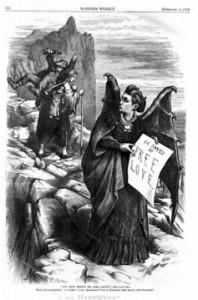On the morning of Wednesday, October 19, 1864, the Civil War seemed far away from St. Albans, Vermont. The local newspaper, the Daily Messenger, wrote that Grant was fighting Lee at Petersburg, roughly 600 miles south. Later that day, the editor would have the scoop of his life when the Civil War’s northernmost battle broke out on Main Street, bullets smashing his windows and a dying man streaming blood on the office floor.
The Confederacy sent commissioners abroad to seek full diplomatic recognition and purchase arms and supplies. In Canada, Commissioner Cassius C. Clay worked with a network of sympathizers, escaped prisoners, and Copperheads—Northerner supporters of secession—to organize a campaign of terrorist sabotage, including the November 25, 1864 New York City fires that destroyed Barnum’s American Museum on Broadway at Ann Street, across from St. Paul’s Chapel.
The attack on St. Albans, Vermont was organized and led by Bennett Young, one of Morgan’s Raiders. Tall, slender and—to judge from his photograph in Stewart Holbrook’s Forgotten Men of American History—Byronically handsome, Young had been captured on a raid into Ohio in 1863 and imprisoned at Camp Douglas near Chicago. Behind the good looks were cold intelligence and iron nerve, and he had he had escaped to Canada within months.
At Clay’s suggestion, Young returned home by blockade runner. After conferring with Secretary of War James Seddon at Richmond, and with President Davis’s approval, Young returned to Canada with a lieutenant’s commission, a sealed letter for Clay, and special orders signed by Seddon, dated June 16, 1864, authorizing Young to “organize for special service a company not to exceed twenty in number from those who belong to the service and are at this time beyond the Confederate States.”
Clay sent Young to Chicago, where local Copperheads, the Sons of Liberty, plotted to seize the city during the 1864 Democratic National Convention while Young led a mass escape of prisoners from Camp Douglas. The conspiracy was betrayed and Young barely escaped. He then went to Columbus, Ohio, to organize an uprising of the six thousand prisoners of war at Camp Chase. Again, the conspiracy was betrayed and abandoned.
By now, Young had a cadre of some twenty reliable men, mostly ex-cavalrymen like himself. Disgusted by his failures, he met with Clay and then reconnoitered Vermont. He targeted St. Albans, a town about fifteen miles south of the Canadian border.
In 1864, St. Albans had 5,000 residents, three banks, hotels, boarding houses, and numerous stores and service businesses. Young arrived on October 10. Seven others arrived that day and the next, registering under assumed names at the American House or the Tremont House. Other young men, allegedly from Montreal and St. John’s, registered at local hotels and boarding houses. Circulating quietly, they observed the habits of the people and the location of the banks and stables. Wednesdays, the day after market day, were always quiet.
Wednesday, October 19, proved cloudy with a threat of rain. At three p.m., the twenty-two rebels struck. Each wore a pair of Navy sixes—Colt Model 1851 Navy .36 caliber six-shooters.
Cyrus N. Bishop, teller of the St. Albans Bank, was at the counter when two men entered, proceeded to his window, and drew revolvers. They seized him and, pointing two revolvers at his head, identified themselves as Confederate soldiers, advising him that if he attempted resistance they would blow his brains out. They forced Bishop to open the safe. At that moment, the bank’s front door opened and in walked Mr. Breck of Breck & Wetherbee with $400 in currency for deposit. “Right over here, mister,” commanded one of the raiders. “I am taking deposits today.” Working fast, the robbers stuffed $73,522 into bags. Then they herded the Vermonters into the directors’ room, locked the door, and departed.
At the Franklin County Bank, one raider drew his gun. The others followed suit. “We are Confederate soldiers,” announced the leader. “There are one hundred of us. We have come to rob your banks and burn your town.” Marcus Beardsley, the teller, froze. The other employee ran for the door but stopped at the threat of death. The raiders went through the drawers and the vault, gathering some $70,000 in greenbacks. The Confederates then locked the two employees in the vault.
At the First National Bank, the raiders found Albert Sowles, the cashier, and ninety-year-old General John Nason, who was deaf and reading the Springfield Republican. As the bank clock struck the hour, Sowles looked up to see three men in greatcoats entering the bank. They drew revolvers as they advanced. General Nason was absorbed in his paper.
The first Confederate to approach Sowles announced, “You are my prisoners. If you offer any resistance I will shoot you dead.” Meanwhile, two other Confederates tossed $58,000 in bonds and greenbacks into haversacks. General Nason looked up. “Who are these gentlemen?” he grumbled. “Seems to me they are rather rude in their behavior.”
Just as the raiders were about to leave, William H. Blaisdell, a local merchant, came into the bank. He took in the scene and tackled the nearest robber. They rolled over and Blaisdell looked up into the mouth of a Navy six. A second muzzle was pressed against Blaisdell’s head. At this point General Nason abandoned his newspaper, creaked forward, and suggested, “Two upon one was not fair play.”
Blaisdell capitulated. Then the cashier, the merchant, and the old soldier were marched across the street to the green, where other citizens were already under armed guard. General Nason, who could hear nothing and had seen little, having read his newspaper during the robbery, asked Sowles, “What gentlemen were those?”
Half a dozen armed strangers appeared at Fuller’s livery stable. They told the hostler to bring the horses out of the stalls, and be quick about it. E. D. Fuller was across the street when he heard commotion in his stable. He entered at a dead run, roaring, “Put back them horses.” A raider rode to meet Fuller, roaring back, “Get out of here, damn you, or I’ll blow me a hole through you.”
Fuller vanished out the door. He reappeared almost instantly across the street with a Colt dragoon revolver, took cover, aimed, and squeezed the trigger. It clicked. Nothing. He squeezed again and again. Still nothing. To his dying day, E. D. Fuller cursed his unloaded gun.
Captain George P. Conger, First Vermont Cavalry, home on leave, strode down Main Street in uniform. The rebels put him on the green with the other citizens.
The Confederates now were gathering and the guards were momentarily distracted. Then Captain Conger sprinted across the green toward the American House. He burst through its front door amidst a fusillade of rebel bullets, bursting glass, and chipped brickwork, ran through the lobby, out the back door, and down Lake Street, shouting the Rebels had come. He grabbed a rifle and shoved two boxes of cartridges into his pockets, took cover behind the American House, aimed at Bennett, and fired. Bennett returned fire with his revolver.
Now townsmen, hearing gunfire and rumors, pulled revolvers and shotguns from desk drawers and closets. Others took muskets from the War of 1812 or even the Revolution from over the mantel. Mrs. John Gregory Smith, the governor’s wife, picked up a horse pistol. Some townspeople began shooting from buildings around the square. Collins H. Huntington came toward the green, firing. A raider’s shot laid him in the street. Another shot knocked down Lorenzo Bingham. The bullets tore through the Daily Messenger’s front door. The windows of Miss Beattie’s Millinery Store and A. H. Munyon’s store tinkled and crashed as the black powder smoke drifted among the elms.
Elinus J. Morrison, a local contractor and apparently unarmed, turned the corner near the Dutcher & Sons pharmacy. A raider saw him and fired. Morrison staggered, clutched his stomach, stumbled into the Daily Messenger streaming blood, and collapsed. He died the next day.
Now all Young’s men had reported. The mission accomplished, he gave the order to ride. With bullets flying and $208,000 in their saddlebags, the raiders galloped out of town.
Captain Conger stopped firing and took command. Gathering perhaps a dozen men with guns and horses, he swung into the saddle and pursued as other townsmen followed as quickly as they could secure horses or buggies.
On the road north, the Confederates met a farmer on horseback. Without explanation, they pulled him down. One mounted the fresh horse, leaving an old nag in its place, and they galloped off. The farmer stood examining the jaded plug he had suddenly acquired.
Then Captain Conger and his men, riding hell for leather, burst into view. They recognized the old horse, thought the farmer must be a Confederate, and started shooting. He fled across a field, the posse in chase, and escaped into a swamp. The Union horsemen took the nag and dashed off.
At Sheldon, hot on Young’s heels, the posse thundered across a burning covered bridge, just fired by the raiders.
The Confederates did not stop at customs. They tore into Canada. The customs officers stepped into the road, gazing north at their dust. Then Conger and his men charged through at a gallop.
Over the next two days, Conger captured ten raiders before Canadian authorities stopped him. Young learned next morning that several of his men had been arrested by Canadian authorities at Philipsburg. As he was their commander and held the authority for the raid, he chose “to give himself up to the authorities and make the cause of his men his own,” knowing Clay would arrange their release on bail.
On the way to Philipsburg, Young was trapped at a farm house where he had stopped for refreshment when some twenty-five Vermonters surprised and then pistol-whipped him. They dragged him to an open wagon, threatening to shoot him as “they denounced him in unmeasured terms.” When they reached the road to the border, Young suddenly knocked down his guards, seized the reins, and turned the horses toward Philipsburg.
He was recaptured within moments. As the posse worked him over again, a British officer trotted by, stopped, and asked for an explanation. Young said he was a Confederate officer on British soil, entitled to protection. As John W. Headley writes in Confederate Operations in Canada and New York, “The British officer reasoned with the Americans for a time, who were reluctant to listen to argument or to delay their return to St. Albans.” The Briton said other raiders had been arrested and all were being sent to St. Albans the next day. Young’s captors finally agreed the officer should take him under their escort to Philipsburg.
The Englishman had lied. The Confederates at Philipsburg, including Conger’s prisoners, were in Canadian protective custody. Young and his men were safe for the moment.
A crisis between Great Britain and the United States erupted overnight. The United States government demanded extradition, claiming the raiders were not soldiers and hence common criminals under the civil law. Amidst it all, Lieutenant Young wrote to the Daily Messenger, enclosing three dollars for a subscription, giving his address as “Montreal Jail.” Another raider wrote to the proprietor of the American House, enclosing “my check for five dollars in payment for my room, which I neglected to settle because of the bustle and excitement which accompanied my business in your fair city,” and asked the landlord to give his warmest regards to the fascinating “young lady who occupied the room adjacent to mine.”
When their case was called on December 7, 1864, Young introduced into evidence his commission and the orders from Richmond. He testified he was a citizen of the Confederate States, which was at war with the United States, and an officer in its army, and his actions at St. Albans were pursuant to orders. On December 13 or 14, 1864, Magistrate C. J. Coursol ruled he lacked jurisdiction over the prisoners and discharged them.
At the behest of the United States, the raiders were arrested and held for trial under a warrant issued by the Superior Court. The prosecution argued the absence of full documentation from Richmond vitiated the defense of authorization. On the last day of trial, literally at the last moment, the Reverend S. F. Cameron, a Confederate chaplain, ran into the courtroom. He had smuggled the official documents confirming Young’s orders from Richmond. Finding the prisoners were indeed soldiers under orders, duly authorized by their government to conduct expeditions against the United States, the Court released them.
At the war’s end, Young was among the handful of rebels excluded from President Johnson’s amnesty proclamation: a remarkable distinction for a lieutenant. He remained abroad for three years. On his return, he was admitted to the Kentucky bar and practiced law until his death in 1919. His 1906 photograph in Headley’s Confederate Operations shows a slender, handsome man with a full head of iron gray hair. He still looked very tough.
New York Press, August 18, 1999
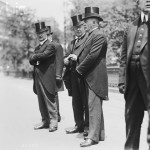 His motivations were inexplicable to his closest friends and one could only infer the obvious: politics was a road to success, honors, and wealth for an ambitious man who had been born poor.
His motivations were inexplicable to his closest friends and one could only infer the obvious: politics was a road to success, honors, and wealth for an ambitious man who had been born poor.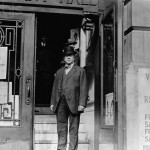
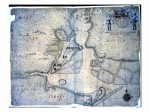 From New York Press, March 24, 1998
From New York Press, March 24, 1998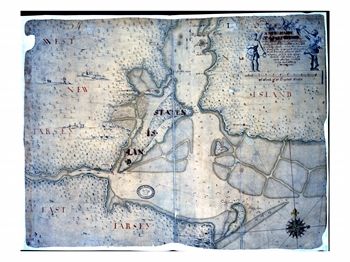 F
F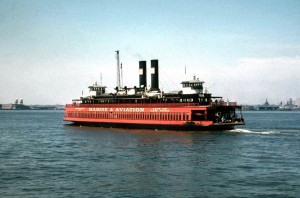 I
I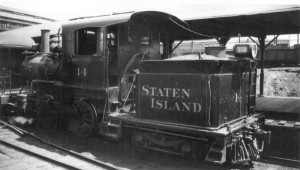

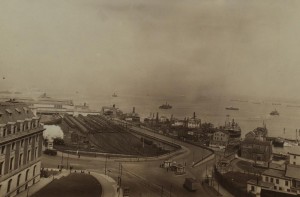
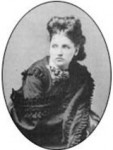
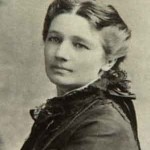
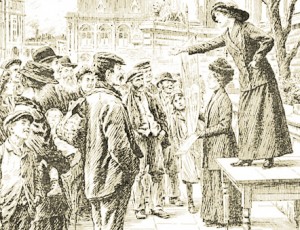
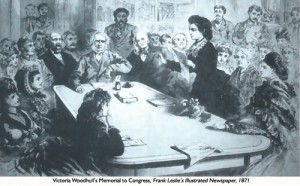
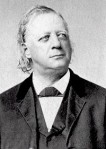 Because Beecher had practiced free love without admitting it, Vickie outed him as an adulterer and lecher, right on the front page of Woodhull & Claflin’s Weekly for November 12, 1872. She described what Beecher and Mrs. Tilton had done, reprinting letters from Mrs. Stanton and other feminists to support her claims. Beecher did not sue for defamation. But Anthony Comstock charged Vickie and Tennie with obscenity, namely, for using the phrase “red trophy of her virginity,” a quotation from the Book of Deuteronomy. The sisters would be repeatedly arrested and jailed for months.
Because Beecher had practiced free love without admitting it, Vickie outed him as an adulterer and lecher, right on the front page of Woodhull & Claflin’s Weekly for November 12, 1872. She described what Beecher and Mrs. Tilton had done, reprinting letters from Mrs. Stanton and other feminists to support her claims. Beecher did not sue for defamation. But Anthony Comstock charged Vickie and Tennie with obscenity, namely, for using the phrase “red trophy of her virginity,” a quotation from the Book of Deuteronomy. The sisters would be repeatedly arrested and jailed for months.